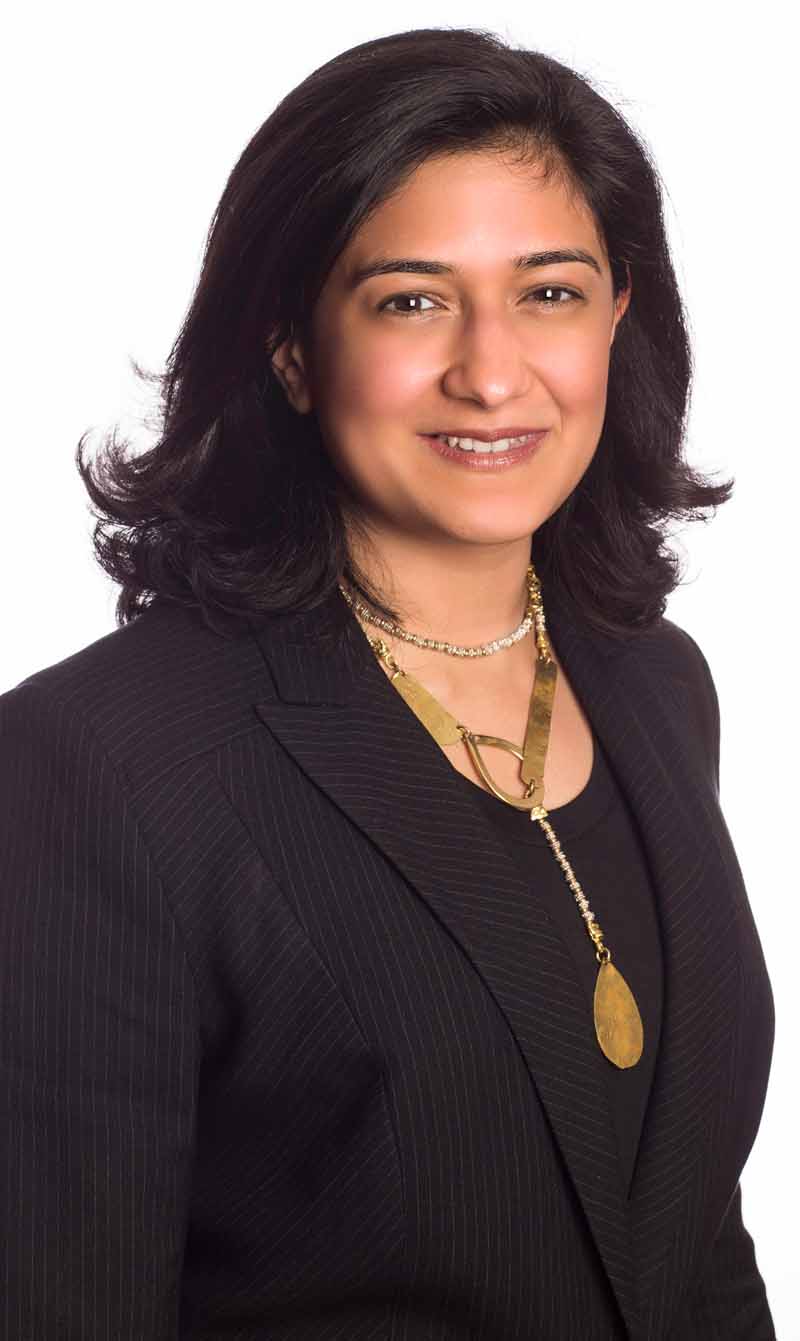Socialising education: The role of universities
Experts from UAE, Kenya and Brazil discussed the rapidly changing global education landscape: what impact would the emergence of free online education and other technology-driven developments have on the affordability and accessibility of education and what role universities can play in this new landscape?
Building locally-relevant education
Bronwen McConkey, chief product officer, African Management Initiative (AMI), spoke about the perspective of workplace learning, drawing on her experiences at AMI.
‘People learn differently in the workplace,’ she said. ‘Ten per cent of what you learn in the workplace comes from formal courses, 70 per cent comes from practising and doing, and 20 per cent comes from your peers and asking a mentor and having that mentor support.’
She stressed the importance of looking not just at how education was accessed, but also how it was conceived. She explained that AMI focused on a particular gap, namely the management capacity for SMEs in Africa, which presented a huge barrier to growth in the continent. ‘Investors are ready and willing more than ever to invest in Africa but they are afraid to put their money in because they don’t believe that the management capacity exists to manage those funds appropriately.’
How did AMI help to overcome this challenge? ‘Our take on this has been to start at the beginning. As a manager, what are your skills gaps? Don’t start with education [and say:] ‘here is a load of information from Harvard’. Instead…do a competency analysis. Here are my gaps as a manager. Here is a goal planning software that will allow me to make a plan to fill those gaps; and now here is a set of courses that will help me to achieve that; and finally, here is a network, a peer network, a community of practice, an online profile, a sort of LinkedIn for managers across Africa that hopefully brings that social aspect.
‘Instead of bringing better access to a range of content that’s built in a faraway land, we’re trying to build the content with African business schools in order to increase their reach and build locally relevant practical content focused on the needs, the context and the environment of African managers, and to deliver that in a way that addresses their specific personal needs.’
Socialising education through social networking
Dr Mansoor Al Awar, Chancellor of the Hamdan Bin Mohammed Smart University (HBMSU), UAE, contributed his opinion on socialising education in the context of his experience at HBMSU, in particular the initiative known as Cloud Campus which aimed to ensure that e-learning penetrated society.
According to Dr Al Awar, Cloud Campus was an application that could be downloaded on a student’s social media network, for example through Facebook, Google+, or LinkedIn. ‘It gets you to access the knowledge through your social network,’ he said, adding that it had vast potential to enable education to be accessed by ‘the kids at home, parents, as well as society at large.’ Cloud Campus could also be customised for companies and their employees. It was already being used in-house at HBMSU in staff training programmes. Outlining four categories of learners in society—casual, committed, concentrated, and continuing learners—Dr Al Awar noted that Cloud Campus was most suited to casual learners in informal learning environments.
More than four million people have accessed Cloud Campus not only from the UAE but across the Arab world and beyond. Furthermore, bundling arrangements with telecommunications operators and banks was expected to push this number to 10 million by the end of 2014.
Student-centric technology
The experience of Carlos Souza, CEO and founder of Brazil-based Veduca, suggested a landscape increasingly populated with non- traditional, online educational institutions. When Souza left investment banking in search of more meaningful work in education, he came to know of the Massachusetts Institute of Technology’s pioneering plan to distribute course content online free of charge. Realising that Brazil needed a similar initiative for its Portuguese- speaking population, he founded Veduca, whose purpose was ‘to democratise access to top-quality education in Brazil with courses from world-class universities.’
The three-year-old company already has almost 6,000 video lectures in over 300 courses from some of the world’s top universities. ‘We have over half a million active students and over seven million visitors…but my favourite number about my company is zero. We were able to achieve [these results] with zero advertising.’
‘[Technology] shifts the power from production to consumption, to the end consumer and in this case, the students. We are building what we call a student-centric technology.’
In 2013, Veduca launched a full online MBA programme— the first massive open online course (MOOC) in Latin America. Besides offering free content, the programme also offered fee-paying options for students who wanted valid certification from the Minister of Education in Brazil. The latter option involved online tutoring and on-site tests in hubs around the country, and students also had to present full final theses. In less than a year, the programme attracted over 20,000 students enrolled in the free programme and 1,400 students in the certification programme.
Technology is central to organisations like Veduca. According to Souza, it ‘shifts the power from production to consumption, to the end consumer and in this case, the students. We are building what we call a student-centric technology.’
The limitations of technology & the power of human interaction
Across the globe, there is a demand for education that has clearly outstripped what traditional institutions are able to supply. Souza nevertheless cautioned against seeing technology as a ‘silver bullet’ for education: ‘Technology by itself doesn’t do anything. Neither does throwing content online.’ Souza believed that top-quality education could be brought to the masses only through ‘a partnership among education technology companies, top-notch universities to provide the content, and local universities to provide infrastructure, online tutoring and local relevance, and meaningful certification.’
Hazem Galal, Partner and Global Leader, Cities and Local Government, PricewaterhouseCoopers, UAE, also touched on the limitations of technology. He outlined three main points, namely: the urgency of the education challenge in the Islamic world; technology as a possible enabler to address this challenge; and recognition that technology was just one part of the solution.
Galal summarised the challenge of education in three “A’s”— availability, accessibility and affordability—and emphasised the importance of early education as well as accounting for cultural differences. He believed that while technology could provide convenient platforms, educators must also address ‘some of the other important challenges that have led to the situation we’re in right now, including some cultural ones. You cannot encourage entrepreneurship if you are not taught at an early age that it’s okay to fail—and this is against our culture sometimes, even in the classroom.’
Galal warned that ‘unless we start thinking about how we’re preparing our students at an early stage and addressing the entire education ecosystem, technology would remain just a very small piece and an enabler that can help us improve some of the outcomes of the education process in the Islamic World but it definitely won’t be enough on its own.’
There were also concerns about the possible downside of technology. Can technology in education actually be a bad thing? Moderator Tan Sri Dato’ Dr Wan Mohd Zahid Mohd Noordin, Chairman, WIEF Education Trust, noted that the discussion appeared to centre primarily on technology and the cognitive aspect of education. ‘The other part of education is what they call the affective part, the feeling part, the caring part. That, I think, cannot at all be replaced or displaced by technology,’ he said, expressing concern that the increasing prevalence of technology in education was resulting in a gradual loss of humanity.
There was already significant debate about whether the impersonal nature of technology had an impact on the learning process, he said, and many people learnt more effectively when the process involved human interaction.
Souza said that the completion rate for a course at Veduca (the percentage of people who actually finished a course) shot up from five per cent to 90 per cent when personal contact was incorporated into the process, for example through tutoring. Dr Al Awar added that HMBSU used a blended approach incorporating three components: virtual classrooms, face-to-face components and self-based study.
It was also important to consider when human interaction should be introduced in the process. Souza noted that the “flipped classroom” model—where classroom discussions and guidance by a professor came only after students first explored the material on their own—has been shown to improve the effectiveness of the learning process.
The future of universities
As the role of technology expands in education, will the role of universities and other educational institutions shrink? McConkey believed that while technology enabled learning, it would not replace educational institutions. Reflecting on the traditional role of universities, she observed that besides the provision of knowledge, universities ‘provide a huge amount of social learning, peer-to-peer learning, networks, and alumni networks.’ They also played a part in innovation, cluster building, science and technology, and research and development. McConkey acknowledged that MOOCs had succeeded partially in democratising education by providing access to information. Real democratisation, however, would only take place when ‘we can open up the social, networking aspects of higher education as well as the innovation that comes along with that and the pathways to better careers.’
Some believed that this was already happening, and that universities should be prepared for change. Dr Al Awar noted that academics and educators often displayed a bias against technology. ‘We believe that pedagogy is the horse and technology is the carriage. We cannot put the carriage before the horse.’ But this reluctance to embrace technology may be ill-advised. Dr Al Awar pointed out that in most definitions, education was primarily defined as being about knowledge and skills transfer, with no mention at all of schools or universities.
Conclusion
Technology-driven developments in education have greatly enhanced access to knowledge, but merely making course content available online does not amount to education. Technology must go hand-in-hand with quality content, as well as a delivery that incorporates human interaction. Quality content can mean content provided by top-notch international universities, but it can also mean content that is locally developed and therefore more relevant. Universities continue to provide unique opportunities for social learning. Recent technology- based systems such as Cloud Campus have explored how people can access knowledge through social media networks, thus bringing technology-based delivery systems closer to the learning environment of traditional universities. As MOOCs begin to offer more such opportunities, the role of universities will evolve in tandem.
___________________
The report is based on a session from the 10th WIEF in Dubai, moderated by Tan Sri Dr Wan Mohd Zahid Mohd Noordin, Chairman, WIEF Education Trust.
Photo Credit:
Faustin Tuyambaze





